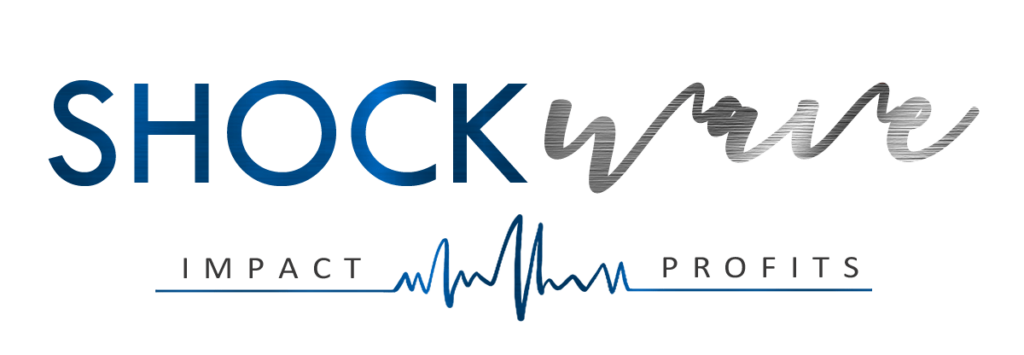12 Ways to Hook an Audience in 30 Seconds

“When you advertise fire-extinguishers, open with the fire,” says advertising executive David Ogilvy. You have only 30 seconds in a TV commercial to grab attention. The same applies to a presentation. The first 30 seconds of your talk is crucial. This is the time your listeners form an impression of you, and of what’s to follow.
Like a fine thoroughbred, you need to hit the ground running by starting strong. Instead, many presenters are more like old, tired workhorses—they start weak by wasting those first precious seconds with platitudes and pleasantries. Brain research shows that we don’t pay attention to boring things. Surprise your listeners with a hook that immediately grabs their attention.
The key is to make sure that the hook is brief, well-rehearsed and pertinent to your topic. What follows is 12 hooks that will grab your audience’s attention—and keep it.
- Use a contrarian approach. Make a statement of a universally accepted concept, then go against conventional wisdom by contradicting the statement. For example, a market trader starts by contradicting the commonly held advice of buying low and selling high. He says: “It’s wrong. Why? Because buying low typically entails a stock that’s going in the opposite direction—down—from the most desired direction—up.” This is a provocative opening that engages the audience right away.
- Ask a series of rhetorical questions. A common way to engage the audience at the start is to ask a rhetorical question. Better still, start with a series of rhetorical questions. A good example of this tactic is Simon Sinek’s TED presentation. He starts with: “How do you explain when things don’t go as we assumed? Or better, how do you explain when others are able to achieve things that seem to defy all of the assumptions? For example, why is Apple so innovative? Why is it that they seem to have something different? Why is it that Martin Luther King led the civil rights movement?” A series of rhetorical questions stimulate the audience’s mind as they ponder the answers.
- Deliver a compelling sound bite. Use a catchy phrase or sound bite that has pungency and watch how the audience perks up. Innovation expert Jeremy Gutshe opens his talk with: “Culture eats strategy for breakfast. This is a sign that is on Ford’s strategy War Room. And the lesson from it is not how good your PowerPoint slide deck is, what it really boils down to at the end of the day is how ready and willing your organization is to embrace change, try new things and focus on when you find an opportunity.” To be effective, the sound bite needs to be brief, interesting and compelling.
- Make a startling assertion. A surefire way to gain people’s attention is by starting with a startling or amazing fact. Take the time to research startling statistics that illustrate the seriousness of what you’re going to talk about. For example, a presentation about conservancy can start with: “Every second, a slice of rainforest the size of a football field is mowed down. That’s over 31 million football fields of rainforest each year.”
- Provide a reference to a historical event. There are times when the day that you present may have some significance in history that can be tied to the subject of your presentation, as an opening gambit. You can easily look up what happened on any day in Today In Sport or a more general site such as This Day In History. You never know what pertinence it might have that will add some pizzazz to your presentation. It’s worth a look.
- Use the word imagine. The word imagine invites the audience to create a mental image of something. Ever since John Lennon’s famous song, it has become a powerful word with emotional appeal. A particularly skillful use of the word occurs in Jane Chen’s TED talk. She speaks about a low-cost incubator that can save many lives in underdeveloped countries. Chen opens by saying: “Please close your eyes and open your hands. Now imagine what you could place in your hands, an apple, maybe your wallet. Now open your eyes. What about a life?” As she says this, she displays a slide with an Anne Geddes‘ image of a tiny baby held in an adult’s hands. There is power in asking the audience to conjure up their imagination, to play along. This tactic can easily be adapted to any topic where you want the audience to imagine a positive outcome, or a vision of a better tomorrow. It can be used, as well, to ask them to imagine being in someone else’s shoes.
- Add a little show business. According to research, 100 percent of Americans quote movies, primarily comedies, in conversation. One of the primary reasons is to entertain. Movies occupy a central place in most people’s lives and a well-placed, pertinent movie quote at the start of a presentation can perk up your audience. Here are a couple of examples: “There’s not a lot of money in revenge” (from The Princess Bride) and “The first rule of leadership: everything is your fault” (from A Bug’s Life.) And here are a couple of sites for movie quotations to start you off: Best Business Quotes From The Silver Screen and The Best Business Wisdom Hidden In Classic Movie Quotes.
- Arouse curiosity. You can start with a statement that is designed to arouse curiosity and make the audience look up and listen to you attentively. Bestselling author Dan Pink does this masterfully in one of his talks. He says: “I need to make a confession, at the outset. A little over 20 years ago, I did something that I regret. Something that I am not particularly proud of, something that in many ways I wish no one would ever know, but here I feel kind of obliged to reveal. In the late 1980s, in a moment of youthful indiscretion, I went to law school.” Curiosity here leads to some self-deprecating humor, which makes it even more effective.
- Use quotations differently. Many speakers start with an apt quotation, but you can differentiate yourself by stating the quotation and then adding a twist to it. For example, “We’ve all heard that a journey of a thousand miles starts with a single step. But we need to remember that a journey to nowhere also starts with a single step.” You can also use a quotation from your own life. For example, in a presentation on price versus quality, I have often used a quote from my Bubbeh (grandfather), who used to say: “I am not rich enough to buy cheap.” There are innumerable sources for online quotations, but you might also consider The Yale Book of Quotations, an app that brings together over 13,000 quotes you can adapt to your purpose.
- Quote a foreign proverb. There is a wealth of fresh material to be culled from foreign proverbs. Chances are your listeners have never heard them so they have novelty appeal. Here are some examples: “Our last garment is made without pockets” (Italy); “You’ll never plow a field by turning it over in your mind” (Ireland); “The nail that sticks up will be hammered down” (Japan), and “Paper can’t wrap up a fire” (China). There are a plethora of sites for foreign proverbs.
- Take them through a “what if” scenario. A compelling way to start your presentation is with a “what if” scenario. For example, asking “What if you were debt-free?” at the start of a money management presentation might grab your listeners’ attention as it asks them to look forward to a positive future. It can intensify their desire for your product or service. Using a “what if” scenario as an opening gambit is easily adaptable to almost any presentation.
- Tell them a story. Stories are one of the most powerful ways to start a presentation. Nothing will compel listeners to lean in more than a well-told story. Science tells us that our brains are hardwired for storytelling. But the story needs to be brief, with just the right amount of detail to bring it to life. It must be authentic and must have a “message,” or lesson, to support your viewpoint. Above all, it must be kind. As Benjamin Disraeli said: “Never tell an unkind story.”
In the world of digital marketing, immediately hooking your audience is even more important. You’re competing for attention in an unbelievably congested environment, so having an effective hook and engaging content is essential.
Here’s our free guide to building perfect landing pages – a vital step for any kind of successful digital presence.


3 comments
This is the right webpage for anybody who would like to understand
this topic. You understand so much its almost hard to
argue with you (not that I really will need to…HaHa).
You definitely put a brand new spin on a topic which has been discussed for years.
Wonderful stuff, just wonderful!
Youre not the average blog writer, man. You definitely have something important to contribute to the net. Such a great blog. Ill come back again for more.
Thank you for the post on your blog. Do you provide an RSS feed?